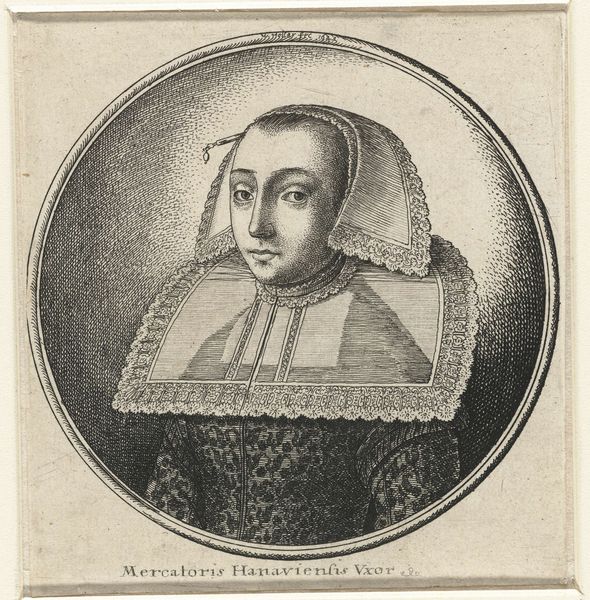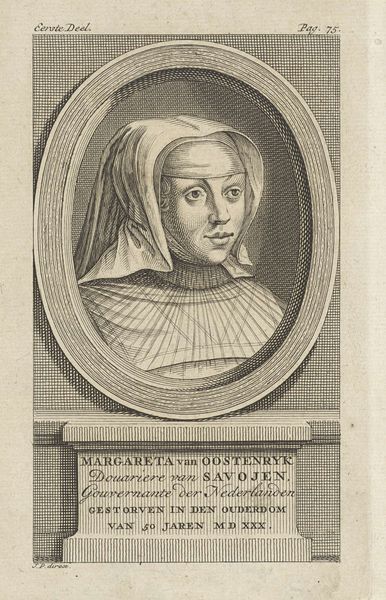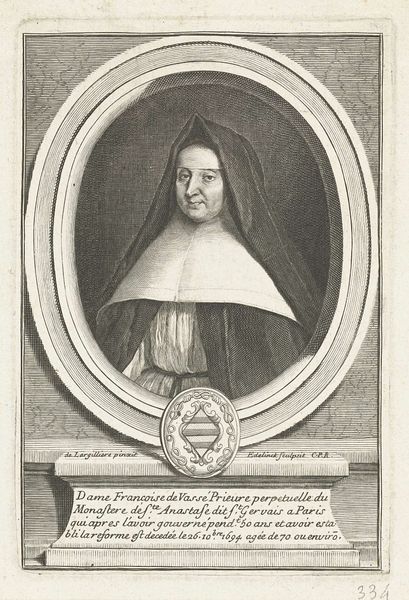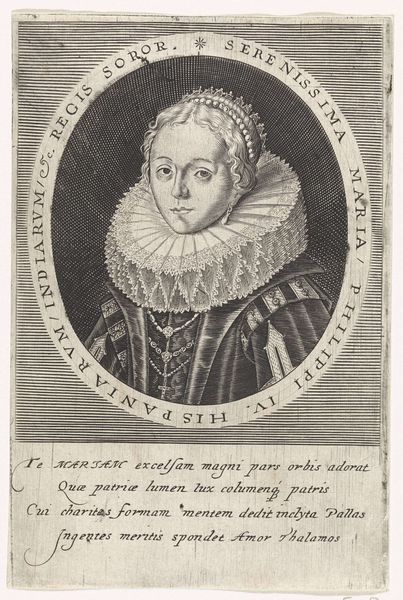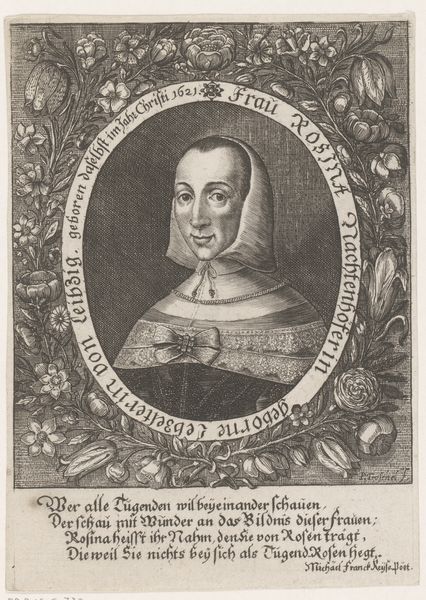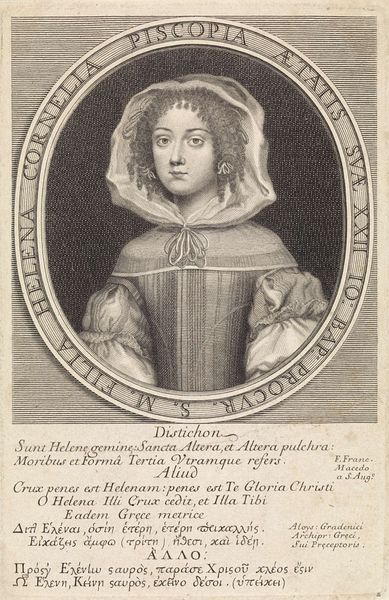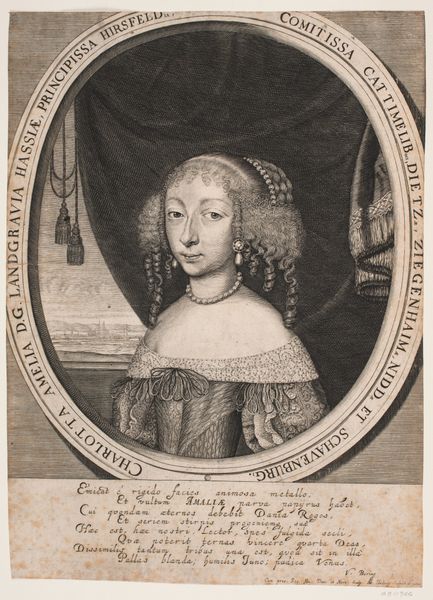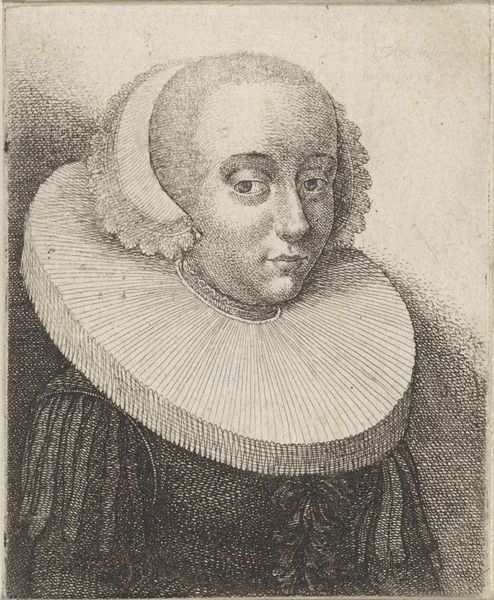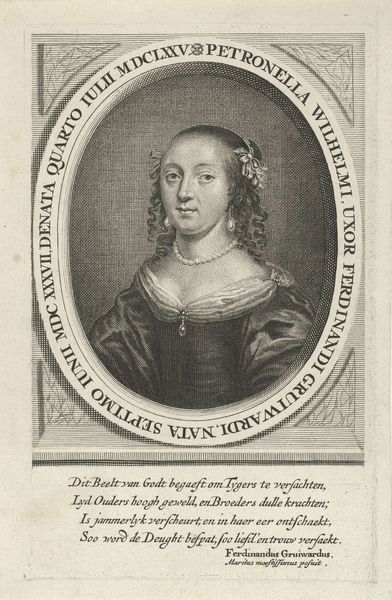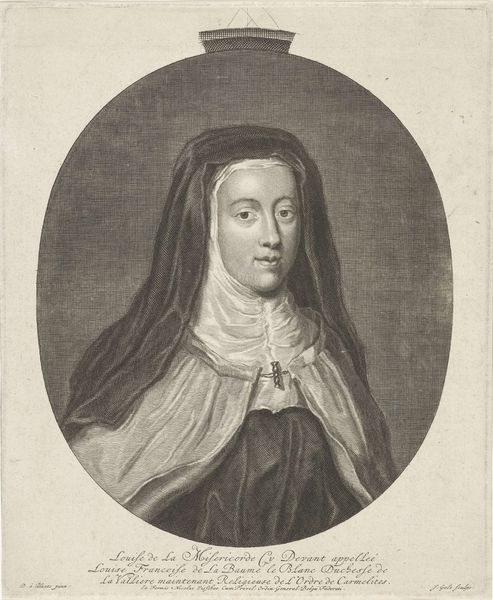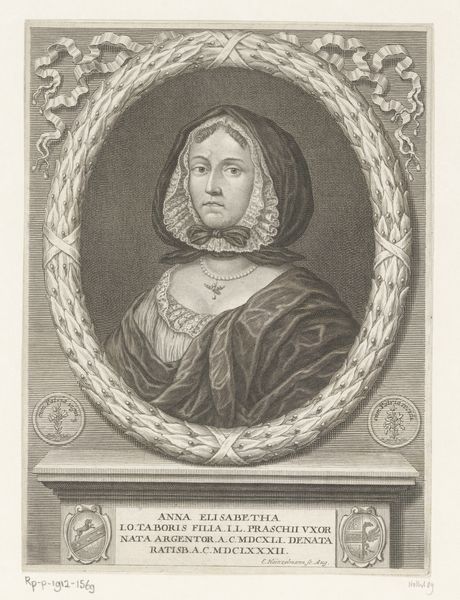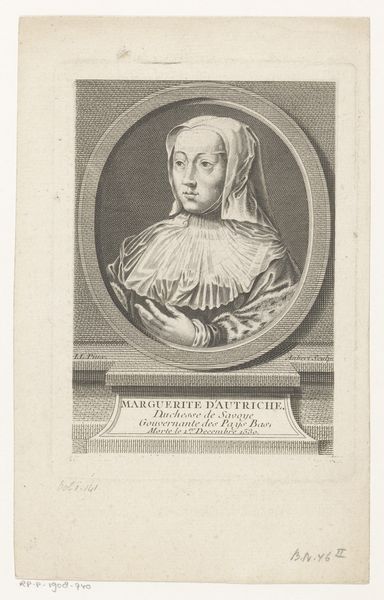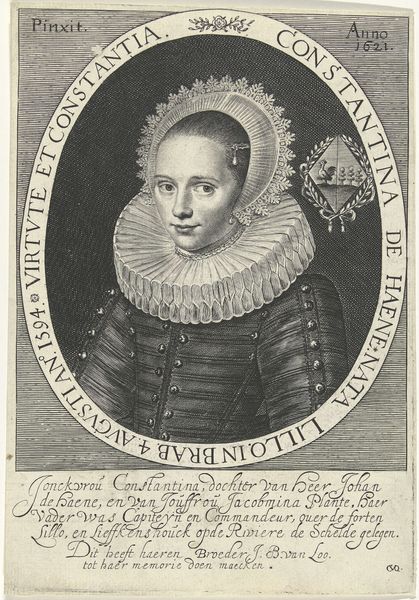
print, engraving
#
portrait
#
baroque
# print
#
caricature
#
figuration
#
line
#
history-painting
#
engraving
Dimensions: height 165 mm, width 127 mm
Copyright: Rijks Museum: Open Domain
Curator: Pieter de Jode II created this print, entitled "Portret van Margaretha van Oostenrijk," sometime between 1628 and 1670. What's your initial take? Editor: There's a certain austerity to it, don’t you think? The tightly controlled lines and the somber gaze give it a very formal, almost detached quality. The textures created are amazing! Curator: Agreed, but consider the broader context. Prints like this were integral to disseminating images of power and influence. Margaretha was, after all, a significant political figure. Reproducing portraits allowed for a wider circulation, constructing and reinforcing her image. Think about the networks required to distribute these prints, and the consumption practices involved. Editor: Absolutely, and the print’s success hinges on the clarity and precision of line. Note the incredible detail captured despite the limited tonal range, from the intricate lace collar to the subtle rendering of her features. Curator: But those material details reinforce class distinctions, don’t they? That lace wasn’t just aesthetically pleasing, it spoke volumes about wealth and status. Furthermore, consider the skilled labor necessary to produce such an intricate image, the working conditions of the printmakers and their place in the larger economic system. Editor: Of course, there's the societal backdrop at play but let's acknowledge the masterful craftsmanship. Look at the skillful hatching and cross-hatching creating volume and shadow! He really coaxed remarkable effects from the engraving process. Curator: That is partially what helped to broadcast power and control throughout Europe. Editor: Well, when I view this artwork, what resonates with me most is how De Jode utilized line and form to convey Margaret’s essence! Curator: I focus on how this portrait also worked to secure her political place in time. It truly encapsulates her role in early modern power structures.
Comments
No comments
Be the first to comment and join the conversation on the ultimate creative platform.
